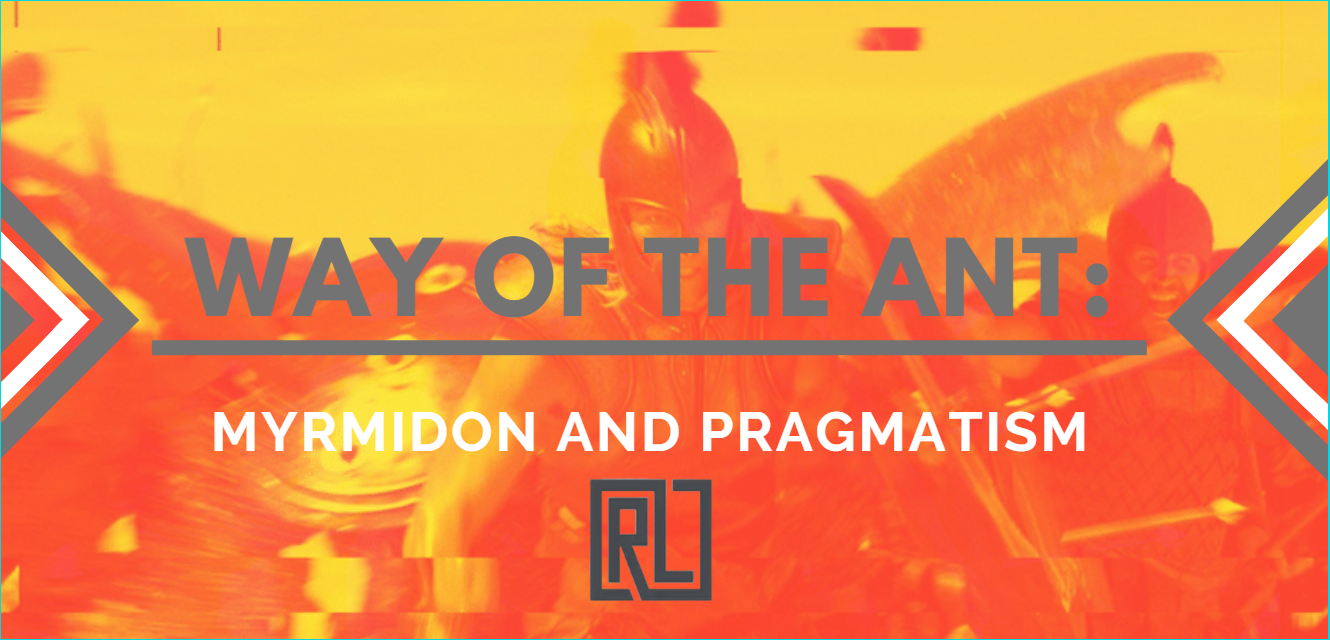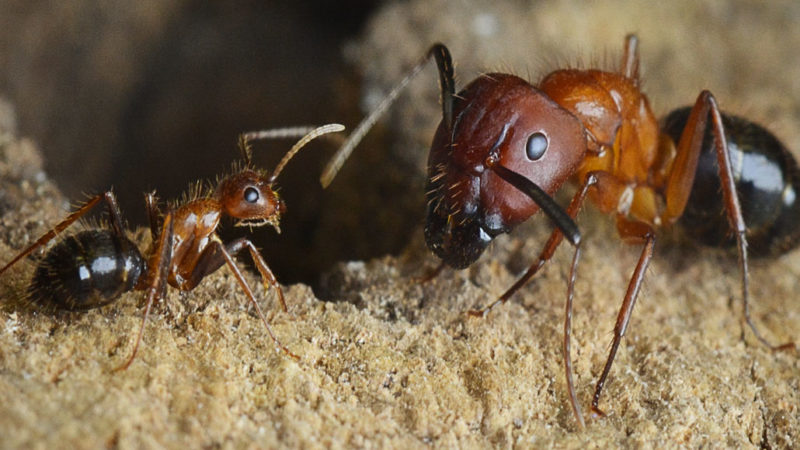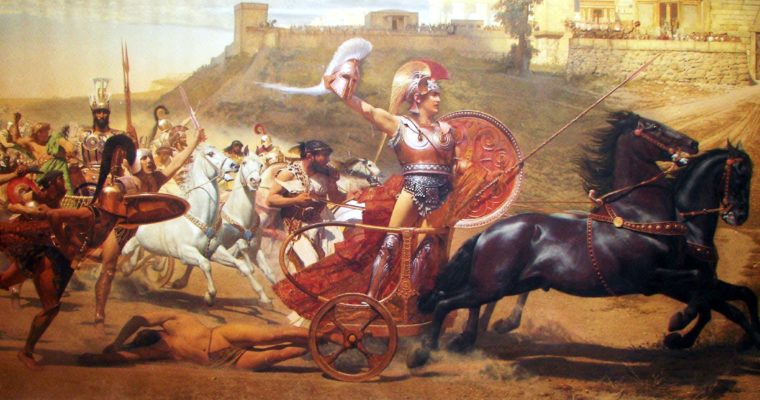|
(Disclaimer: This is not professional or legal advice. If it were, the article would be followed with an invoice. Do not expect to win any social media arguments by hyperlinking my articles. Chances are, we are both wrong). “Achilles glared at him and answered, "Fool, prate not to me about covenants. There can be no covenants between men and lions, wolves and lambs can never be of one mind, but hate each other out and out an through. Therefore there can be no understanding between you and me, nor may there be any covenants between us, till one or other shall fall” ― Homer, The Iliad Like many young impressionable men of the early 2000s, I enjoyed my fair share of machismo fills filmed. Violence and masculinity dripped from media during that time, and special attention was given to Greek and Roman culture. Whether it was HBO's Rome or Frank Miller's 300, the young adult harkened back to an age unseen. One such movie was Troy, the 2004 epic historical war film directed by Wolfgang Petersen. In this film, Brad Pitt plays the role of the famed Achilles, hero, and demigod of Homer's Illiad. He leads a band of rough and tough soldiers called the Myrmidon and gave them a riveting speech on the Trojan shores before seizing a temple . His devil may care attitude, and the sheer ruthlessness of his men left an impression on me. So much that when I started my own wrestling club back in 2010, my friend and I took the name Myrmidon as our own. We wanted to be what those warriors aspired to be with all the things flying around with Spartan in the title. The term Myrmidon comes from a Greek expression that essentially means "ant people." It ultimately derives from the Greek myrmex, which means "ant." The origin of the Myrmidons' legend is a mixture of myth and history, which reflects stereotypes that the Greeks and many other cultures have about ants. Myrmidon's original meaning in English was "one of a legendary Thessalian people accompanying Achilles to the Trojan War" (the word is usually capitalized when used in this sense). In the early 17th century, the name took on a range of extended meanings, ranging from "loyal follower" to "unquestioning subordinate." The Myrmidons were allegedly fierce warriors from Thessaly that fought during the Trojan War with Achilles as their leader and were considered among the best warriors in Greece. They also were known for wearing black armor, according to some accounts. Seemingly no more than handsome humans in appearance, their eyes are always a shade of gray or silver. And a Myrmidon's natural appearance seems more athletic than an average human's, with much less effort required to maintain an enviable physique of peak conditioning. In one account, the Myrmidons have originally been humble worker ants from the island of Aegina that were transformed into humans. After Zeus seduced Aegina, daughter of the river god Asopus, Aegina's island was named after her. In a jealous rage, Hera sent a plague to wipe out the inhabitants of the island. After the plague, the island's only inhabitants were Aeacus, the king of Aegina, and his sons Peleus and Telamon. Aeacus prayed to Zeus that the island would be repopulated so that he could have people to govern. That night, after Aeacus made his prayer to Zeus, he dreamed that he saw a line of ants on a tree, and the ants were transformed into human beings. The next morning, Aeacus and his sons were greeted by a group of people who claimed that Aeacus was their ruler. These people have been industrious, frugal, and resolute, reluctant to give up easily on a task. Aeacus called his new subjects Myrmidons. Eventually, King Aeacus banished his sons from Aegina, and some of the Myrmidons went with them. Peleus took some Myrmidons to settle Thessaly. While ruling the Myrmidons in Thessaly, Peleus married a nymph, Thetis, and had a son, the famous Achilles. When the Trojan War started, the Greeks sought out the greatest warrior in all the known world. In response, Achilles led a company of Myrmidons off to war across the Aegean. The Myrmidons are said to have been able warriors that wore black armor. They aided Achilles as he conquered 12 cities and won battle after battle for the first nine years. Archaeologists have determined that the island of Aegina has been inhabited by humans since the Neolithic period. The earliest Neolithic inhabitants were probably settlers from Anatolia, based on the name. During the Greek Bronze Age, Aegina was incorporated into the Minoan and Mycenaean civilizations. Between 1700 and 1500 BC, it appears to have been the location of a significant gold treasury. It may have been a stronghold to protect the wealth of local kings or chieftains. During this time, there is evidence of Minoan styles of pottery, suggesting influence from the south. Later in the Bronze Age, Aegina came under the influence, and likely the dominance, of the Mycenaeans. The highest mountain on the island appears to have been a center for the Mycenaean cult of Zeus Hellanios. After the Bronze Age collapse, the island seems to have been depopulated before it was resettled by people from Epiduaros. A port city was also established. Interestingly, the seaport city founder, based after the island was resettled, has been named Aeacus. It is possible that the last story of the origin of the Myrmidons could be a cultural memory of the population collapse and resettlement of Aegina after the end of the Bronze Age. The island's association with ant people could be related to warriors from that island wearing black armor, making them appear ant-like. Unsurprisingly Myrmidons are disciplined and focused. They obey orders without question, quickly and efficiently doing whatever they are told. A Myrmidon would sooner die than disobey an order or break a promise. Anyone or anything that gets in the way of those orders will be swiftly dealt with. Ants, like warriors, are very pragmatic, doing whatever they see needs to survive, even if it means elimination. In ancient literature, including Greek stories and the Bible, ants are often portrayed as diligent and hard workers. In the Greek tale of the Myrmidons, there seems to also be a connection between ants and warriors. Ancient cultures seemed to have always suspected that ants were human-like in some way. Since the rise of the modern scientific study of ants, myrmecology, entomologists have learned that ants are even more human-like than even the ancients probably noticed. We now know that ants farm fungus and milk aphids like human’s milk cattle. Ants are also known for engaging in wars. It is unclear if the ancient Greeks knew much about ant warfare. Still, their association of ants with warriors, such as the Myrmidons, is an eerie coincidence. Ants are, in fact, one of the only animals other than humans that full-scale wage wars. The myth of the Myrmidons is prophetic. Ants are among the only animals, besides humans, to engage in conflicts of this scale. When ants of one colony encounter another colony competing for the same territory, the two ant colonies may engage in large scale combat where there will be many casualties. The ancient Greeks may not have ever noticed the ant battles occurring at their feet. Nonetheless, the fact that the fiercest warriors of the heroic age in ancient Greece were believed to be descended from ants transformed into humans is appropriate. It affirms what we know of those warlike social insects. How can we apply the pragmatism of the Myrmidon today in wrestling or any other sport? By definition, pragmatism is an approach that assesses the truth of meaning of theories or beliefs in terms of their practical application's success. Ideally, every coach is a pragmatist at heart. Pragmatism is often seen as crude, as it's minimally abstract. Pragmatists often use abstraction to get things to work. This process includes applying objective data, subjective personal experience, and that all too imprecise term "culture." The aim of the pragmatist lies in outcomes: Does what I applied work acceptably?
A pragmatic coach is a doer, and doers have blemishes. Pragmatic athletes value practice over theory—the value means to produce ends. It's important not just to assign ourselves to the most common method because "that's the way things are done." At least at our gym, we relish that we find new philosophies and concepts and then test them in the room and later in competitions. Far too many of us subscribe to the teaching of a blog or a book without even stopping to see if these rules are even practical (yes, I know the irony in even stating this. But I genuinely believe this. Don't cling to my words as gospel. Go out and experience). We all have implicit biases when it comes to how we work. Guiding principles without the needed scrutiny of our thoughts can become ideas we're handcuffed to. This speaks to the pragmatic approach that accepting what gets results is more critical than emotional, intelligent control. It manifests in sport or coaches alike, who cling relentlessly to outdated or inapt principles despite constraints making them hard or impossible to implement. Athletes and coaches believe that what worked for them will work for others—such a structure provides security but rejects openness to change and nuance in our gym. We look at most programs that have a system in which they plug and play personnel. On the other hand, we think of ourselves at Myrmidon as jazz musicians, playing the space in between the notes. Not a rigid set of guidelines for athletes but room to explore and test to see what works and what doesn't. Olympic level wrestlers often embrace the idea of being "comfortable with the uncomfortable." That is the growth mindset that most successful people and athletes subscribe to. It's also a problem with coaches who either compete in or build a culture around a specific sport. If expectations aren't met, an outside effort to protect a general oversimplification will be made. Consider the statement: If you don't teach how to run legs on top, are you really a good wrestling coach? If everyone subscribes to the exact mental attitude then the status quo will never change. The rich get richer; the poor get poorer. It's critical as coaches and athletes that we find ways to cut against the grain. While there is so much to remove and take away from any warrior culture's ethos, it is most important to see that battle-tested is superior to battle born. The Myrmidon embrace trial and error and that has cemented them with the halls of mythology. The Pragmatist’s Approach to Strength and Conditioning Myrmidon Myrmidons: The Fiercely Loyal and Unstoppable ‘Antmen’ Army of Achilles
0 Comments
Leave a Reply. |
AuthorRyan Lancaster wears many hats. Dive into his website to learn about history, sports, and more! Archives
July 2024
Categories |





 RSS Feed
RSS Feed